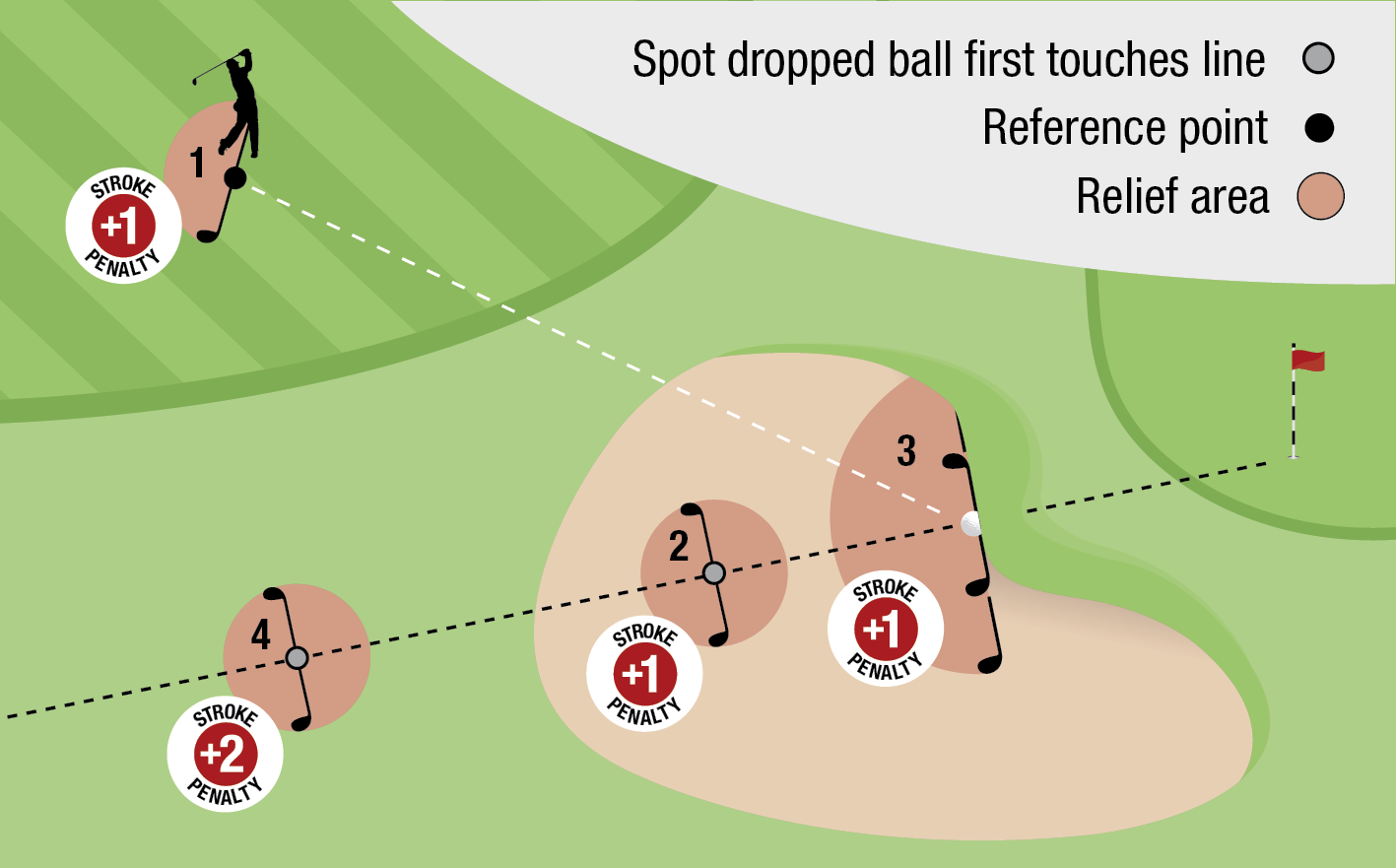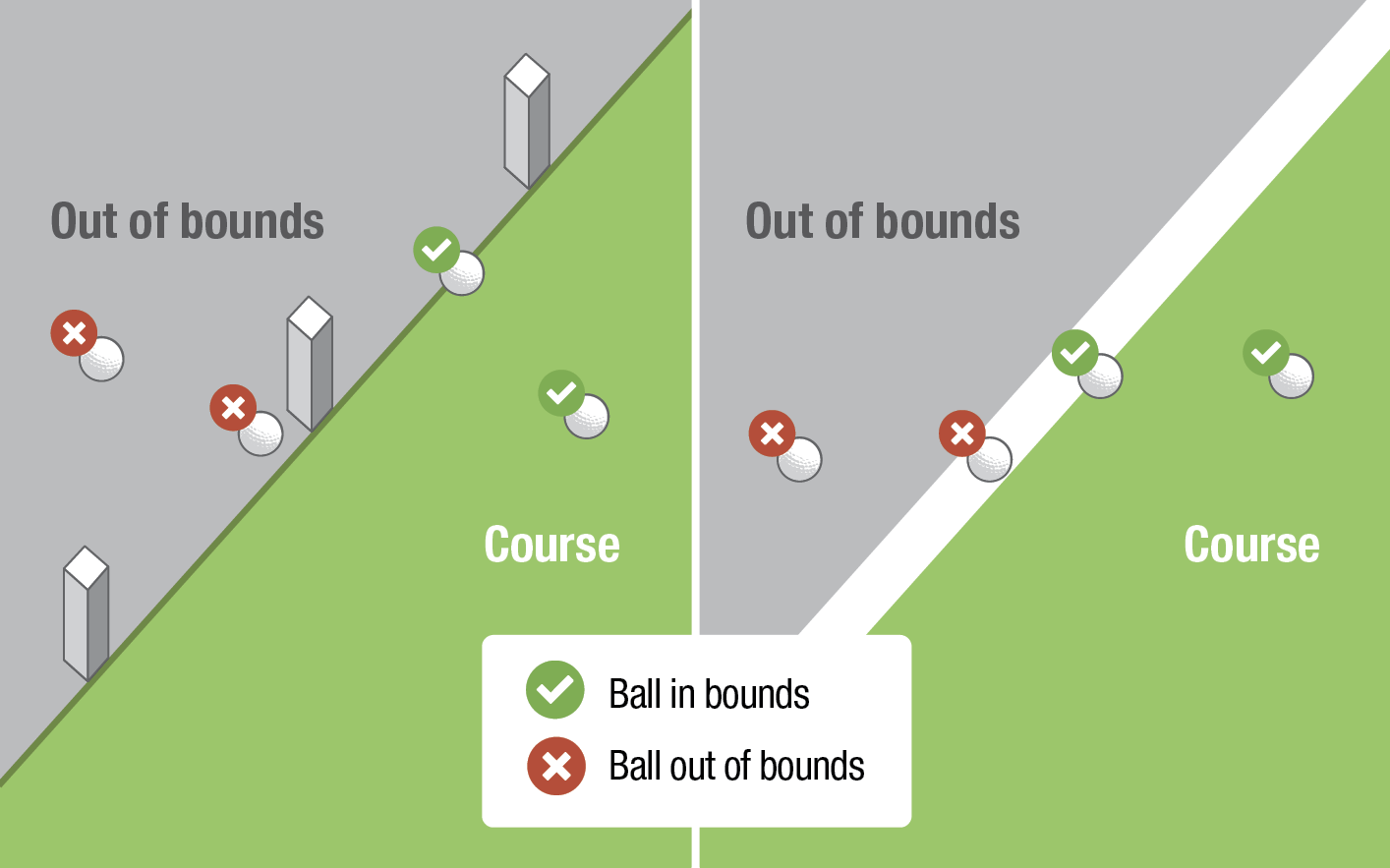Rules of Golf
April 2025 - Rules from the Tours
04 Apr 25
4 mins
The 2025 golf season is fast approaching in the northern hemisphere and many golfers will be exchanging watching the world best golfers from their sofa to testing their own games out on the course. The professional tours have continued to excite viewers with Rory McIlroy recently winning The Players Championship in a three-hole Monday play-off, Richard Mansell and Mimi Rhodes winning their first DP World Tour and Ladies’ European Tour events respectively and fan favourites Lydia Ko and Viktor Hovland also securing wins. Let’s take a look at some rulings you may have heard about, and one or two that you may not have come across.
JJ Spaun, The Players Championship 2025, TPC Sawgrass
JJ Spaun narrowly missed out on winning The Players Championship but one talking point from his final round came at the 9th hole when his second shot came to rest in a collar of deep rough. When Spaun took his stance to get a feel for his shot, he found he was standing on a sprinkler head, which under the Rules of Golf is defined as an immovable obstruction. The Rules allowed Spaun to take free relief by finding his nearest point of complete relief in the general area and drop within one club-length of that point, no nearer the hole (Rule 16.1). After taking complete relief from that sprinkler head, Spaun then had interference from a second sprinkler head. As this was considered to be a new situation, Spaun followed the same procedure to take relief from the second sprinkler head. This time the Rules of Golf gave the player a favourable break as part of his relief area was now in a much shorter cut of grass within the general area. When taking free relief, your nearest point of complete relief will not always be to your liking and you may be better to play the ball as it lies, rather than taking the available relief, but sometimes knowing the Rules and paying attention to all your options can help you to save a stroke or two. For more information on how to take free relief from an abnormal course condition, watch the following video:Relief from Abnormal Course Condition in General Area
Jimmy Walker, Bapco Energies Bahrain Championship 2025, The Royal Golf Club
We are now going to rewind the clock to the Bapco Energies Bahrain Championship in early 2025 when the DP World Tour was playing the International Swing. Major champion Jimmy Walker approached his ball on the par-5, 14th hole only to find his ball embedded but with 75% of the ball touching the ground outside the bunker and the other 25% touching sand inside the bunker. What followed? Rule 2.2c states that if part of the ball is touching both the general area and one of the four specific areas of the course (in this case the bunker), the ball is treated as lying in that specific area of the course. As Walker’s ball was considered to be inside the bunker and embedded ball relief is only available for a ball lying in the general area (Rule 16.2), he was not entitled to take embedded ball relief. Walker’s options were to play the ball as it lay or to take unplayable ball relief. Had Walker decided to take unplayable ball relief, he would have had the options shown in the diagram below available to him (Rule 19.3). However, he decided to play the ball as it lay, completing the hole with a bogey six. The very next day Walker made an eagle three on the same hole, perhaps softening the blow of his previous misfortune just a little!
Casey Jarvis and Marcus Kinhult, Bapco Energies Bahrain Championship 2025, The Royal Golf Club
Staying in Bahrain, the following two rulings occurred one group after another. During round one on hole 15, Casey Jarvis struck his tee shot right of the fairway, towards the white boundary stakes. The Championship committee had chosen not to paint a white line to define the boundary of the hole as the ground in that area was very sandy and a paint line would have been quickly blown away. When a boundary is defined by stakes, the boundary edge is defined by the line between the course-side edge of the stakes or fence post at ground level and the stakes themselves are out of bounds. Jarvis’ ball was so close to the boundary that a rope had to be stretched between the course side edge of the stakes to determine if the ball was in or out of bounds, with the ball unfortunately being only just out of bounds. Unbelievably, in the very next group, Marcus Kinhult hit his tee shot to a similar position. The rope had to be used once again, but this time a tiny part of Kinhult’s ball could be seen on the course side edge of the stakes, meaning his ball was just in bounds. For more information on when a ball is out of bounds, see the diagram below:
Bud Cauley, The Players Championship 2025, TPC Sawgrass
We’ll now head back to The Players Championship, where Lucas Glover’s ball had an interesting interaction with his playing partner on hole 16 of the final round. Bud Cauley was striding towards his ball on the par-5, 16th hole when he was distracted by Rory McIlroy hitting his tee shot on the adjacent par-3 17th hole and he accidentally stood on Glover’s ball in the fairway. Thankfully, Rule 9.6 states that if it is known or virtually certain that an outside influence (including another player in stroke play) moved a player’s ball at rest then there is no penalty, and the ball is simply replaced on its original spot. If Cauley had accidentally stood on his own ball in the same situation (ie when not searching for the ball), he would have received one penalty stroke and the ball would be replaced on its original spot. For more information on deciding whether a player caused the ball to move, watch the following video:Standard for Deciding Whether or Why a Ball Moved

